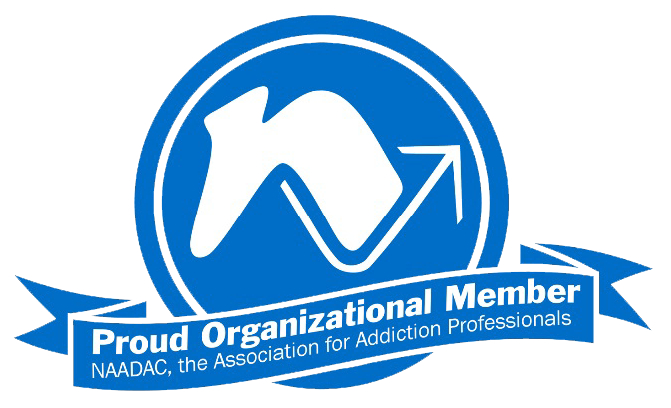-
GeneralGeneral
-
Screening for Substance Use Disorders in Primary Care Homepage


Welcome to Screening for Substance Use Disorders in Primary Care (SSUDPC). The SSUDPC course teaches about the screening, basics of treatment, and prevention of substance use disorders related to alcohol, tobacco, and other drugs. SSUDPC provides an introduction to the health consequences associated with substance use disorders and the links between substance use disorders and mental health disorders. Additionally, students will gain practical knowledge on how to communicate with patients, conduct a medical consultation, screen for substance use disorders, monitor treatment effects, and decide when to refer their patients to specialized settings.
This course can be used to train students about screening and referring persons with substance use issues to professionals with further education in substance use interventions, such as the NextGenU.org Substance Use Disorders in Primary Care course (which provides more detailed information about how to intervene when alcohol, tobacco, or other substance use problem has been identified).
This SSUDPC course is sponsored by the Africa Mental Health Foundation, the University of Florida. Like all courses on the NextGenU.org platform, it is competency-based, using competencies adapted from the WHO Mental Health Gap Action Programme (mhGAP) and learning resources from accredited, world-class organizations such as the National Authority for the Campaign Against Alcohol and Drug Abuse (NACADA), the National Institute on Drug Abuse, the World Medical Association, Substance Abuse and Mental Health Services Administration, and the World Health Organization.
The course was initially co-developed by Veronic Clair, MD, MSc, CCFP, FRCPC; Sukhdeep Jassar, MPH; and Abednego Musau, MBChB. The course was redesigned and updated by Pablo Baldiviezo, MD, DiplEd; Carolina Bustillos, MD, DiplEd; Genikka Camille Gabral, B.ED, MSc; Magali Collonnaz, MD, MPH, MSc; Felix Emeka Anyiam, MPH, MScPH, DataSc.; Yhan O'Neil Williams, BSc, Ph.D.; Hugo Rojas, MD, MSc, DiplEd;
For publications on NextGenU.org's courses' efficacy, see NextGenU.org's publication page. Subscribe to our newsletter to be notified of future updates, new courses, and to be part of our community.
There are six (6) modules to complete, which provide an introduction to:
- Introduction to Substance Use Disorders in Primary Care
- Addressing Stigma and Protecting Human Rights
- Screening for Substance Use Disorders
- Other Information on Substance Use Disorders, Screening, and Intervention
- Urgent Situations and Co-morbidities with Substance Use Disorders
- Communication with People Seeking Care, their Caregivers, and Family
The completion time for this course is estimated at 91 hours, comprising 16 hours of learning resources, 32 hours of studying and assimilating content, and 43 hours of participating in learning activities and quizzes, to assist the learners in the synthesis of learning materials. This course is equivalent to 2 credit hours.
The course requires completion of Discussion Forums, Peer Activities, and Quizzes to receive a course certificate. At the end of each module, there is a practice quiz of 10 multiple-choice questions. After you've completed each module, quiz, and learning activity, at the end of the course, you'll have access to a final exam consisting of 50 multiple-choice questions and a chance to evaluate this course. Participants have up to three opportunities to take the final exam and achieve the required passing score of >=70%. Once you've passed the last final exam and completed the evaluations, you will be able to download a certificate of completion from NextGenU.org and our course's co-sponsoring organizations. We keep your personal information confidential, never sell any of your information, and only use anonymized data for research purposes. Also, we are happy to report your testing information and share your work with anyone (your school, employer, etc.) at your request.
Engaging with this Course:
You may browse this course for free to learn for your personal enrichment; there are no requirements. To register for this course, it is a requirement that learners have a college-level/bachelor's degree.
To obtain a certificate, a learner must first register for the course and then successfully complete:
- Pre-test,
- All the reading requirements,
- All quizzes and pass with a 70% with unlimited attempts,
- All peer activities,
- All discussion forums,
- The final exam with a minimum of 70% and a maximum of 3 attempts, and
- The self and course evaluation forms.
To obtain credit:
- Complete all requirements listed above for the certificate, and
- Your learning institution or workplace should approve the partner-university-sponsored NextGenU.org course for educational credit, as they would for their learner taking a course anywhere.
NextGenU.org is happy to provide your institution with:
- A link to the description of the course training, so they can see all its components, including the co-sponsoring institutions,
- Your grade on the final exam,
- Your work products (e.g., discussion forums responses) and any other required or optional shared materials that you produce and authorize to share with them,
- Your evaluations -- course, and self-assessments, and
- A copy of your certificate of completion, with the co-sponsoring universities and other organizations listed.
To obtain a degree, NextGenU.org co-sponsors degree programs with institutional partners. To obtain a full degree co-sponsored with NextGenU.org, registrants must be enrolled in a degree program as a student of a NextGenU.org institutional partner. If you think your institution might be interested in offering a degree with NextGenU.org, contact us.
We hope you will find this a rewarding learning experience, and we count on your assessment and feedback to help us improve this training for future students.
Here are the next steps to take the course and earn a certificate.
- Complete the registration form.
- Take the pre-test.
- Begin the course with Module 1: Introduction to Substance Use Disorders in Primary Care. In each module, read the description, complete all required readings and any required activity, and take the corresponding quizzes.
This course meets nationally approved standards of education developed for the addiction/substance use disorders counseling profession. This course's participants are assured that the continuing education (CE) credits provided will be accepted toward national credentialing by the NAADAC Certification Commission for Addiction Professionals (NCC AP), as well as by many of the individual state licensing/certification bodies in the addiction and other helping professions.
*The previous version of this course is also available here for your reference but is not available for registration. Only students that were registered before can complete it.
-
Module 1: Introduction to Substance Use Disorders in Primary Care
 Competencies covered in this module:
Competencies covered in this module:- Be receptive to including mental health and substance use disorder services in primary care.
-
Module 1: Lesson 1: Introduction
Upon completion of this lesson, you will be able to:Learning Objectives:
- Recognize how primary health care can be involved in lessening the burden of mental illness, including substance use disorders, and understand the idea of task-shifting.
- Identify what substances are used and abused and how they affect people’s health and social functioning.
5 URLs, 1 Forum -
Module 2: Addressing Stigma and Protecting Human Rights
 Competencies covered in this module:
Competencies covered in this module:- Be competent in addressing stigma, and promoting and protecting the human rights of those you serve.
-
Module 2: Lesson 1: Policies and Legislation
Learning Objectives:
Upon completion of this lesson, you will be able to:- Discuss international and national standards, legislation, and policies on mental health and human rights.
- Discuss stigma and its impact, as well as practical strategies to address it.
- Explain how to prevent stigma, marginalization, and discrimination and promote the social inclusion of people with mental, neurological, and substance use disorders by fostering strong links with employment, education, social (including housing), and other relevant sectors.
- Identify care provision in a way that respects the dignity of the person, is culturally sensitive and appropriate, and is free from discrimination on the basis of race, color, sex, language, religion, political or other opinion, nationality, ethnicity, indigenous or social origin, property, birth, age, or other status.
- Recognize matters of confidentiality, as well as the patient's right to privacy.
- Demonstrate how to ensure a patient understands the proposed treatment and provides free and informed consent for treatment.
12 URLs, 1 Forum -
Module 3: Screening for Substance Use Disorders
 Competencies covered in this module:
Competencies covered in this module:- Be competent in administering the ASSIST questionnaire.
-
Module 3: Lesson 1: Alcohol, Smoking, and Substance Involvement Screening Test (ASSIST)
Learning Objectives:
Upon completion of this lesson, you will be able to:- Explore and familiarize yourself with the Alcohol, Smoking, and Substance Involvement Screening Test (ASSIST), its background, and rationale for use in primary care.
- Summarize general and health-related problems related to substance use.
- Demonstrate interviewing skills necessary to screen for substance disorders using the ASSIST Screening Tool.
- Explain how to accurately score the answers to the ASSIST questionnaire.
- Explain the mhGAP model of care for alcohol and substance use disorders.
- Recognize a patient using an ASSIST Scorecard and give appropriate feedback.
- Explore other evidence-based models of screening and brief intervention in primary care.
16 URLs, 1 Forum -
Module 4: Other Information on Substance Use Disorders, Screening, and Intervention
 Competencies covered in this module:
Competencies covered in this module:Deepen your understanding of aspects related to tobacco use cessation. - Deepen your understanding of alcohol and other substance use disorders, including their impact and care.
-
Module 4: Lesson 1: Ability to Screen Effectively and Quickly for Substance Use Disorders
Learning Objectives:
Upon completion of this lesson, you will be able to:- Identify the effectiveness of tobacco cessation interventions.
- Recognize the general benefits and challenges of quitting smoking.
- Describe the personal health disease risks (e.g., cardiovascular, respiratory, and cancer) associated with tobacco use and involuntary (secondhand) exposure to tobacco smoke.
- Explain how brief advice is given in practice.
- Discuss the impact of alcohol on overall health and be able to educate people about harmful alcohol use, including during pregnancy and breastfeeding.
- Identify the resources (including community support) and tips to encourage self-monitoring of symptoms and be able to explain when to seek care immediately.
- Discuss common consequences of other substance use.
17 URLs, 1 Forum -
Module 5: Urgent Situations and Co-Morbidities with Substance Use Disorders
 Competencies covered in this module:
Competencies covered in this module:- Be able to recognize severe mental health risks that are sometimes associated with substance use.
- Be aware of how substance use can affect sexuality and the risk of HIV infection.
- Be aware of alcohol comorbidities relating to HIV, depression, psychosis, and reproduction (Fetal Alcohol Spectrum Disorders).
- Be aware of special reproductive health issues for women in relation to substance use, comorbidity, and pharmacological treatment.
- Be able to assist patients in leading healthy lifestyles.
-
Module 5: Lesson 1: Mental Health Comorbidities
Learning Objectives:
Upon completion of this lesson, you will be able to:- Identify evidence of severe self-injury, such as signs of poisoning or intoxication, or signs/symptoms requiring urgent medical treatment such as bleeding from self-inflicted wounds, loss of consciousness, or extreme lethargy.
- Recognize how substance abuse can impact HIV-related risks.
- Identify the need for education and support for those with mental illness and/or substance use disorders in relation to risky behavior (e.g., unprotected sex).
- Explain why those who drink alcohol have a higher chance of contracting HIV.
- Explore potential risks of medications for the fetus or baby when providing care to a pregnant or breastfeeding woman. Ensure that the babies being breastfed by women on medications are monitored for adverse effects or withdrawal and undergo comprehensive examinations if required.
- Discuss plans for contraception and pregnancy with women of childbearing age.
- Demonstrate assisting patients in acquiring healthy lifestyles, which may improve mental health and help manage substance use triggers, such as stress.
- Demonstrate how to perform/conduct a general healthy weight assessment (BMI, weight, and height).
18 URLs, 1 Forum -
Module 5: Lesson 2: Physical Activities, Diet, and Healthy Living in Relation to Substance Use and Mental Health
Learning Objectives:
Upon completion of this lesson, you will be able to:- Demonstrate assisting patients in acquiring healthy lifestyles, which may improve mental health and help manage substance use triggers, such as stress.
- Demonstrate how to perform/conduct a general healthy weight assessment (BMI, weight, and height)
8 URLs, 1 Forum -
Module 6: Communication with People Seeking Care, Their Caregivers, and Family
 Competencies covered in this module:
Competencies covered in this module:- Be proficient in effective communication with those to whom you provide care, their family, and their caregivers.
-
Module 6: Lesson 1: Communication Strategies
Learning Objectives:
Upon completion of this lesson, you will be able to:- Recognize how to use simple and clear language, and ask the person for his or her own understanding of the condition. Provide information to the person on their health status in terms that they can understand, and be friendly, respectful, and non-judgmental at all times.
- Explain how communication is clear, compassionate, and reflective of age, gender, culture, and language differences.
- Demonstrate how to keep caregivers informed about the person’s health status, including issues related to assessment, treatment, follow-up, and any potential side effects while ensuring the patient's consent.
- Recognize how to respond to disclosure of private and distressing information (e.g., regarding sexual assault or self-harm) with sensitivity.
14 URLs, 1 Forum -
Course and Self Evaluation & Certificate
 In this section, you can provide feedback about this course to help us make NextGenU.org better. Once evaluations are completed, you will be able to download your certificate of completion.
In this section, you can provide feedback about this course to help us make NextGenU.org better. Once evaluations are completed, you will be able to download your certificate of completion.


